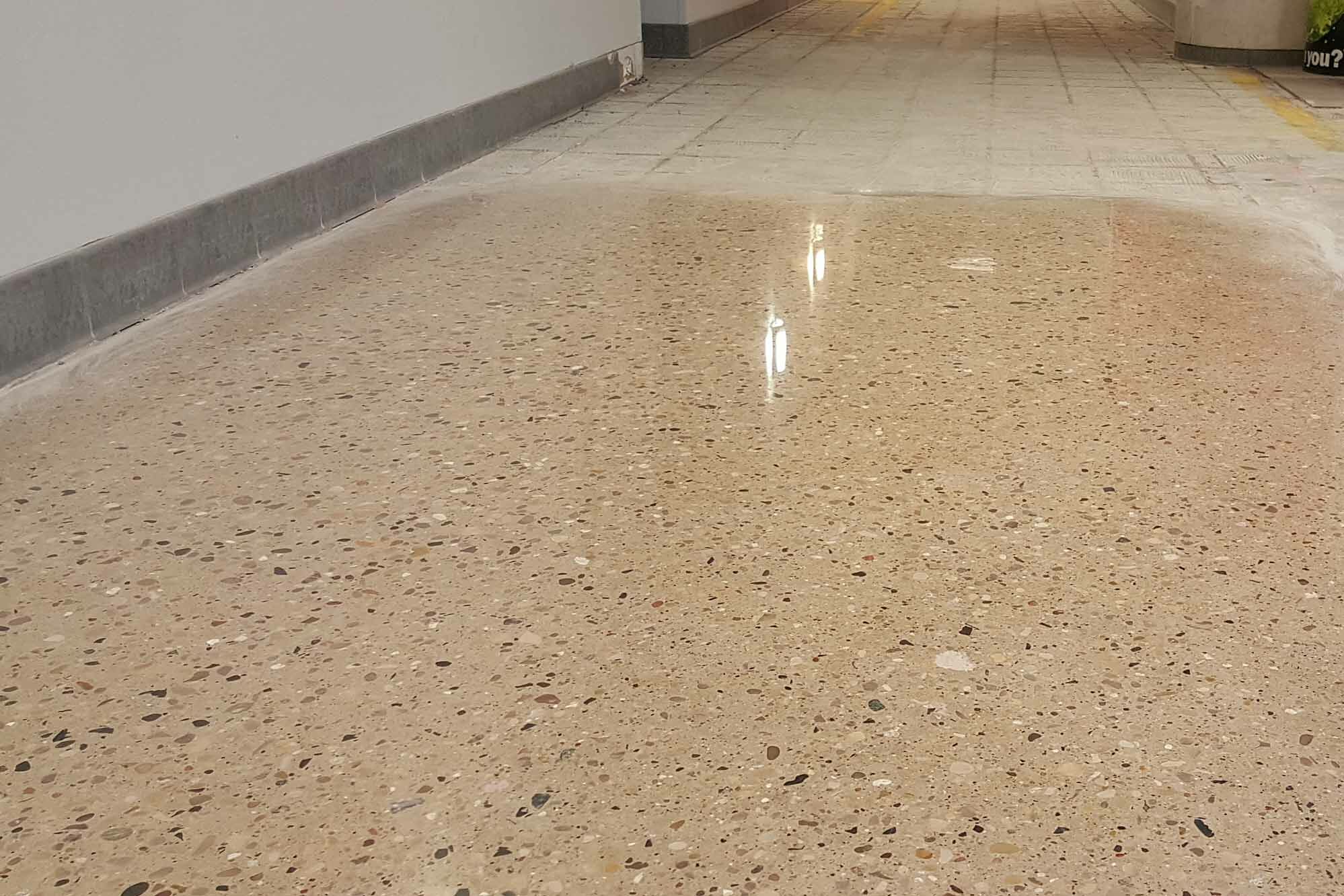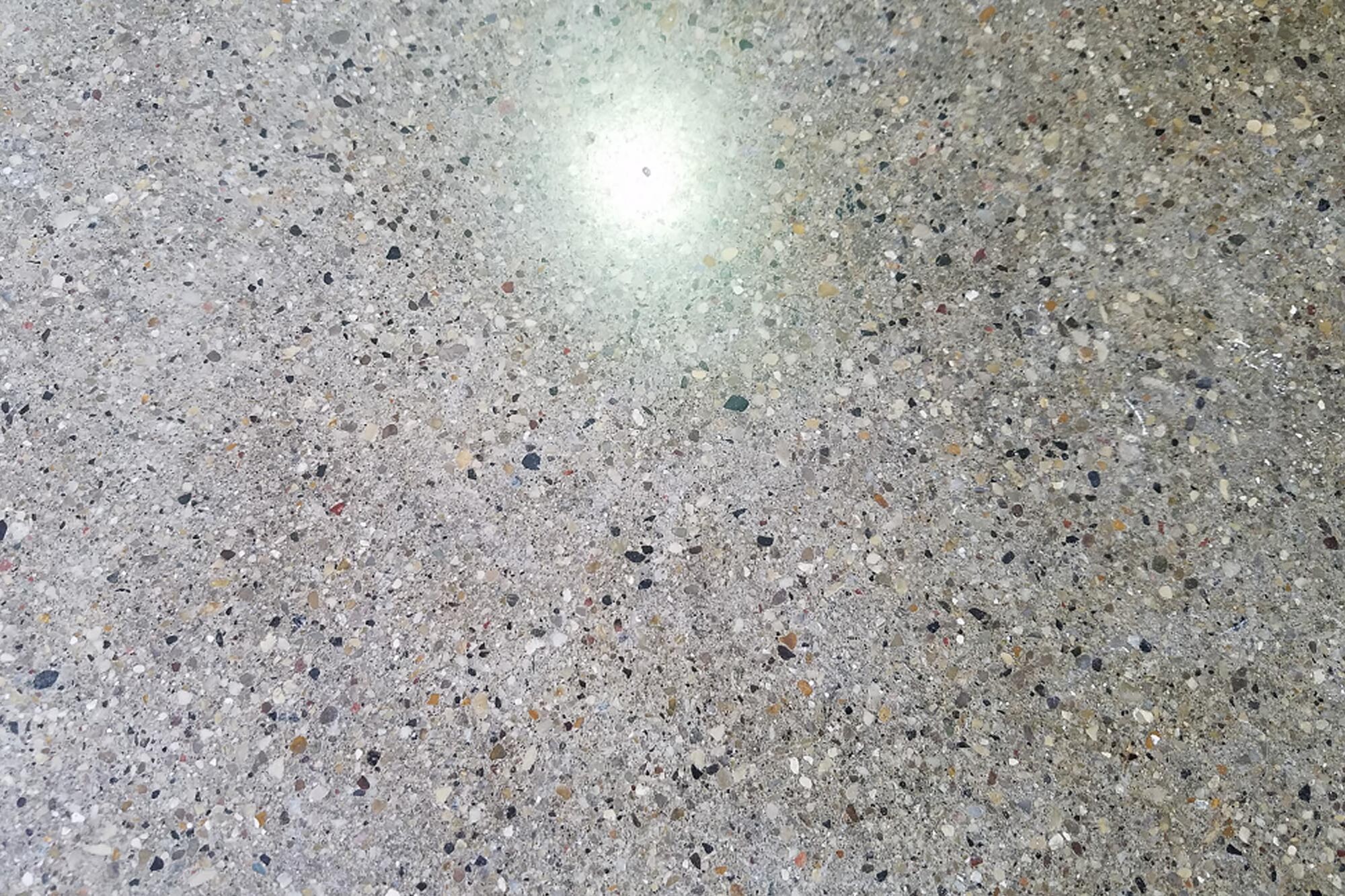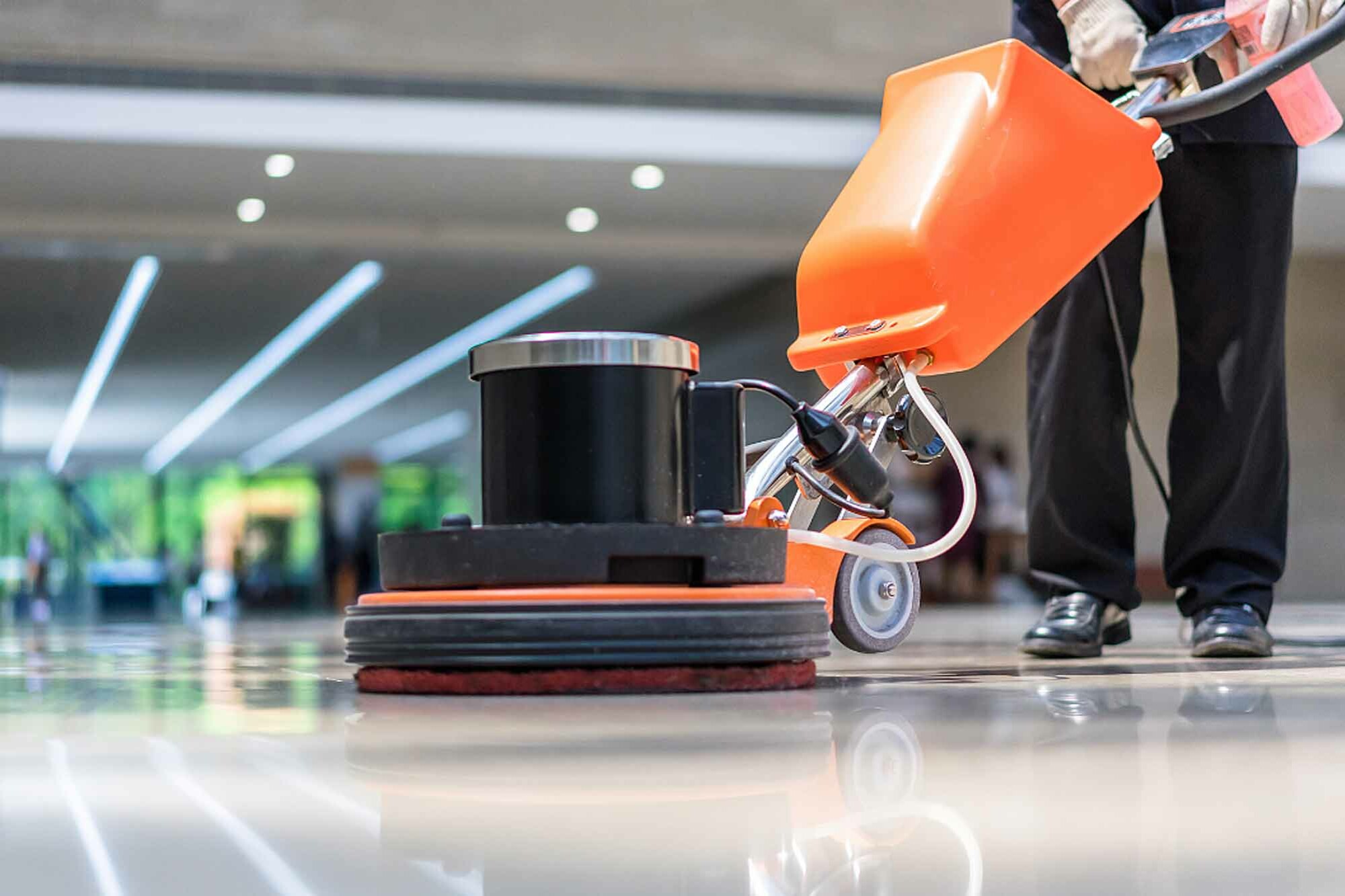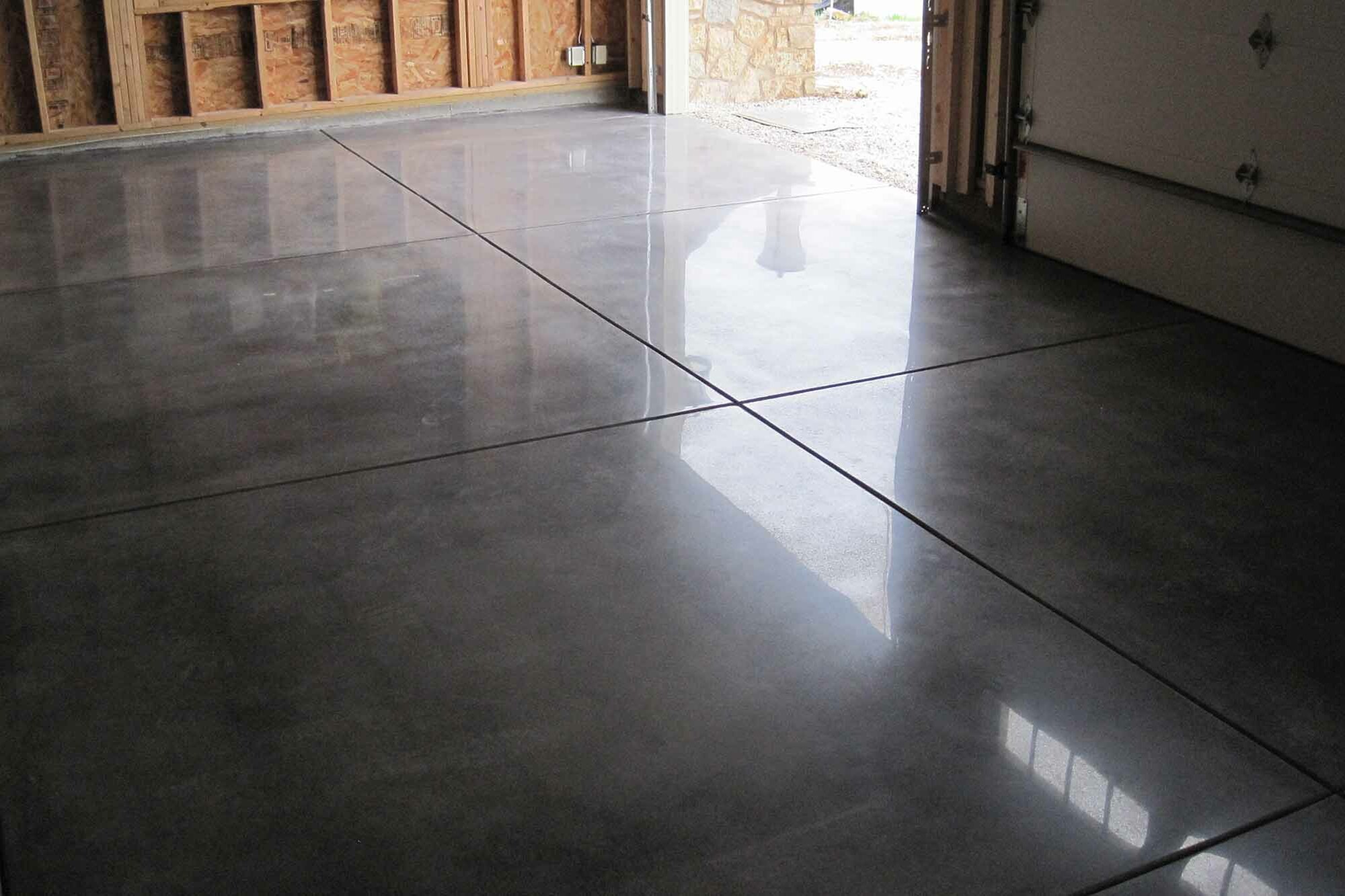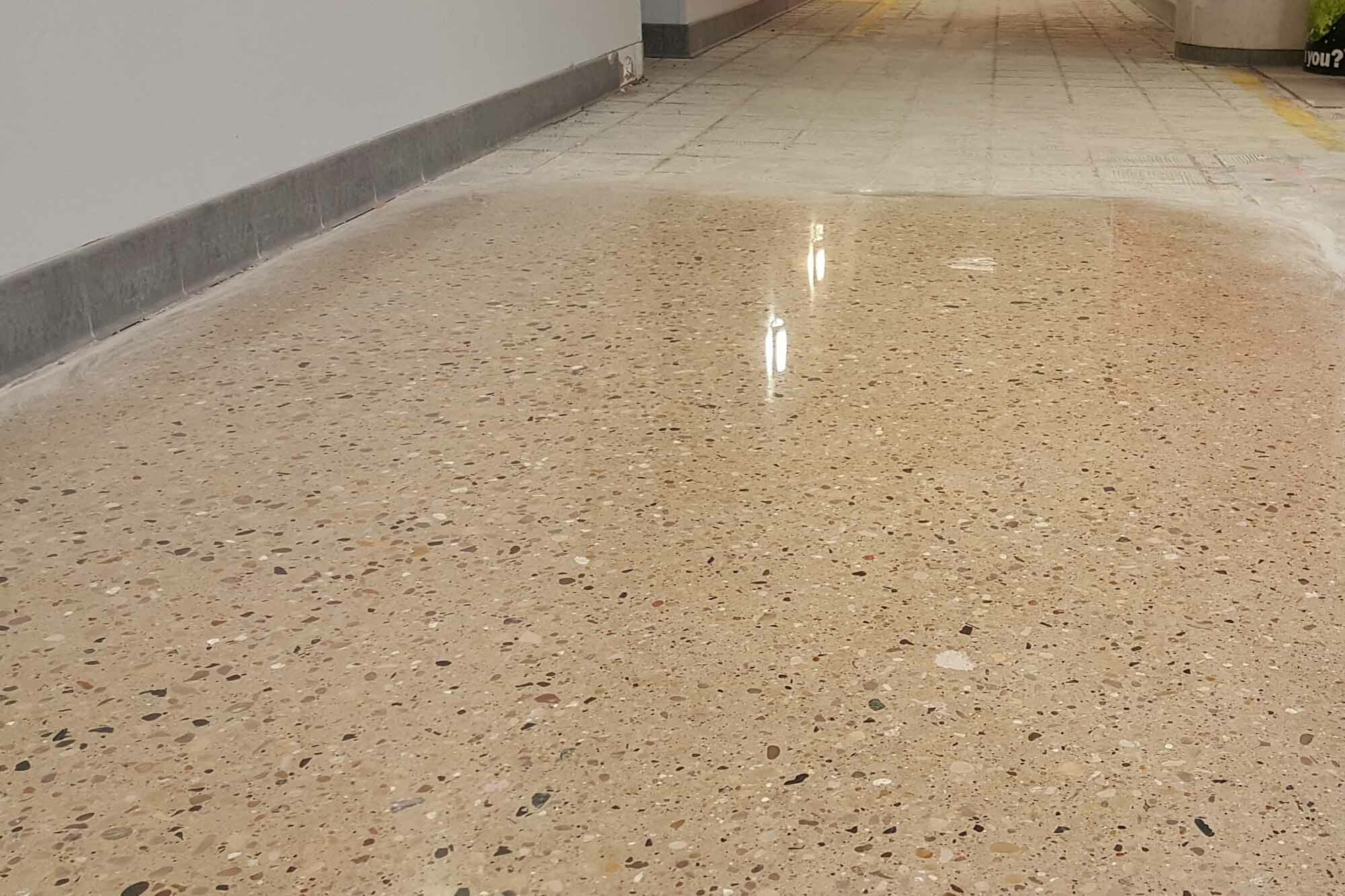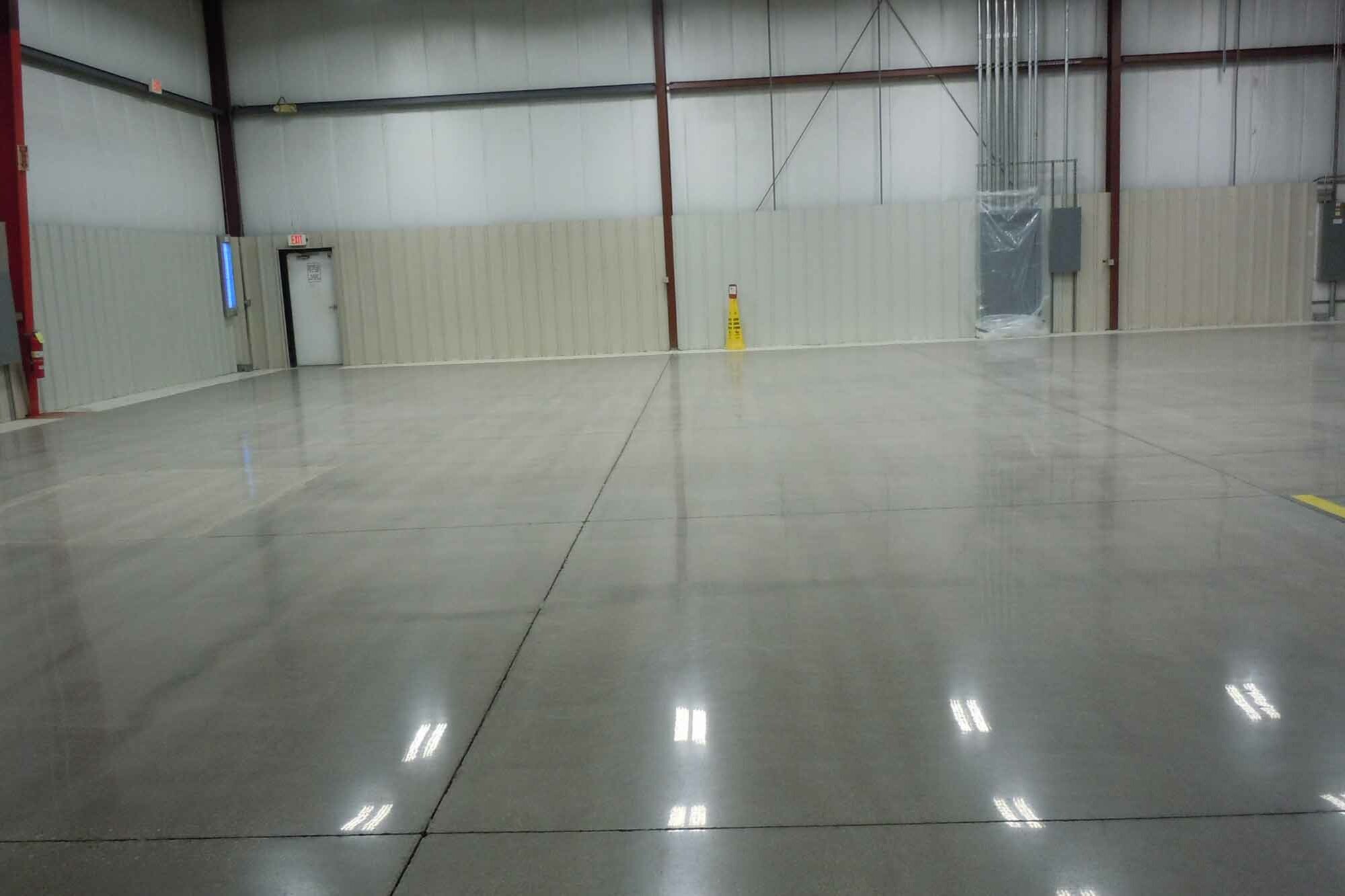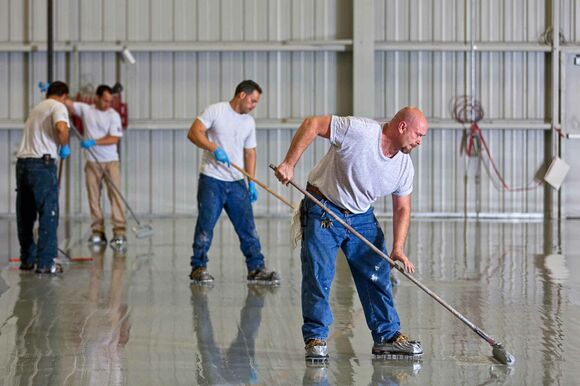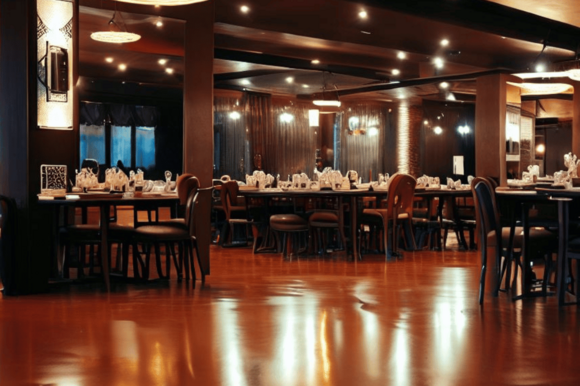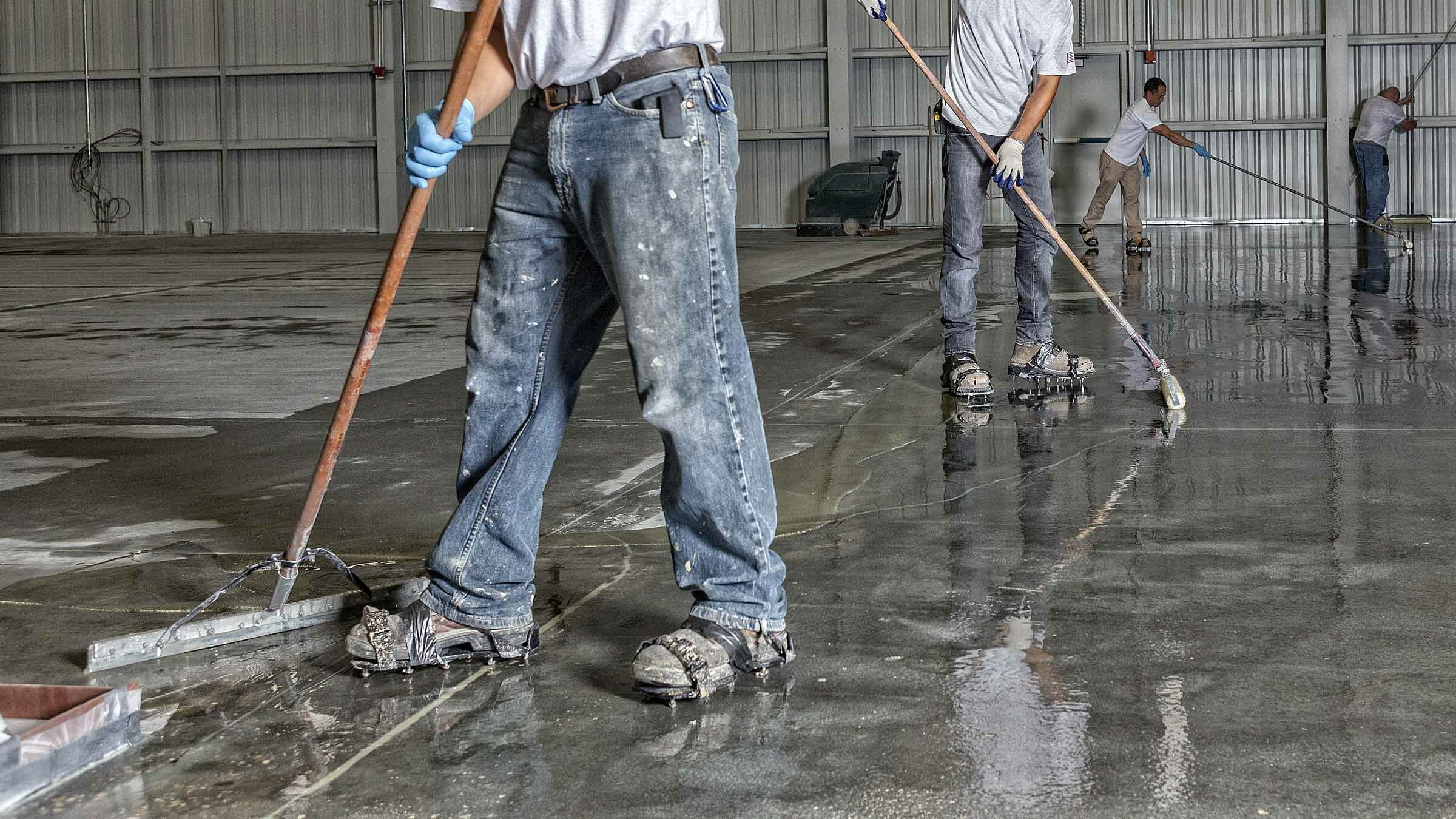Our Polished Concrete Flooring Guide
The demand for polished concrete as a flooring solution has skyrocketed. The unique decorative options, combined with the simplicity and low price point, has residential and commercial customers scheduling installations. The natural product easily fits into the green movement, and improved safety is desirable for companies and families alike. The benefits of polished concrete solutions don’t stop there. To understand the benefits of polished concrete, we’ll start by explaining what polished concrete is.
What is Polished Concrete?
The American Society of Concrete Contractors, or ASCC, defines polished concrete as “the act of changing a concrete floor surface, with or without aggregate exposure, to achieve a specified level of finished gloss using one of the listed classifications; Bonded Abrasive Polished Concrete, Burnished Polished Concrete, or Hybrid Polished Concrete.”
The process of polishing concrete consists of multiple steps allowing you to choose between levels of sheen based on your maintenance needs and desired aesthetic. Because any structurally secure concrete substrate is polishable, the versatile floor coating can function in many environments.
The technique of polishing concrete starts with using polishing machines equipped with grinding diamonds to remove surface stains, surface blemishes, and minor crevices. After 3-4 passes, the initial step is complete. After completing the coarse grinding, flooring specialists apply a concrete hardener and densifier to the surface. When the hardener finishes drying, allowing for increased durability and abrasion resistance, the concrete polishing resumes. This step is called fine grinding.
During fine grinding, concrete flooring technicians use progressively finer diamonds until they achieve the desired sheen for that project. Concrete floor finishes range from 400 grit satin finish to 3000 grit high-gloss. At this point, optional water and oil repellents can be applied. Here's an excellent explainer video.
Old Floor, New Look
Over time, untreated concrete floors break. Many factors contribute to the deterioration, including old age, stress on the surface, damage from rain and other weather conditions, delamination, improper curing during installation, joint shoulder failure, and curled cold joints. The list doesn’t end there. However, installing a polished concrete flooring system fixes it all, and makes the oldest floor look brand new.
Often mistaken for marble, polished concrete adds a professional, gleaming aesthetic to your concrete floor. Concrete flooring technicians achieve this look by removing the surface layer of existing, damaged concrete - including any previously applied coatings. Deteriorating, weak, or fractured concrete gets strengthened when it is polished. The resulting polished concrete floor resists impact and abrasions.
Low Cost
The money savings from installing a polished concrete floor begins right away. While the levels of grinding required ultimately determine the cost, polished concrete is one of the more inexpensive flooring options. Like with other flooring solutions, the price goes up depending on the additional effects desired. Staining, scoring, and exposed aggregate, although increasing the cost, create custom looks. Industry professionals agree that the larger the polished concrete space, the more cost-effective it is.
Another determining factor in the cost of polished concrete flooring is the condition of the existing concrete floor. If the underlying floor has cracks, they must be filled. After completing the repairs, flooring professionals decide if they need to resurface the concrete before polishing. Regardless, joints need to be sealed if they are not already.
Considering the longevity and durability of polished concrete, you’ll save money now and in the long term. In ten years, savings from a polished concrete system runs into the thousands for most facilities.
Little Maintenance
The cost savings extend to the upkeep of polished concrete. Polished concrete requires little maintenance. Unlike most other flooring systems, polished concrete does not need aggressive scrubbing to keep it clean. Because of the compacted surface, it repels paints, oils, and other staining chemicals. It also never needs to be stripped or waxed. Therefore, the money generally budgeted for the janitorial and maintenance work can be redirected.
When dusting occurs, the specks of dust force epoxy coatings from the surface, requiring costly maintenance. Polished concrete eliminates dusting, referring to small dust particles getting pushed up to the floor surface through a force called efflorescence. By eradicating efflorescence, polished concrete creates a healthier work environment and better appearance.
The recommended maintenance protocol includes:
Regular sweeping, dusting, and mopping. Daily dusting and sweeping keep polished concrete hygienic by removing all the dust and debris from the surface. Weekly mopping with a mop pad removes the remaining dirt and debris, preventing build-up.
Never use highly acidic cleaners when mopping, as they damage polished concrete floors over time. Cleaners with high levels of soap leave behind streaks of residue, dulling polished concrete. Additionally, cleaners should never be allowed to dry on the surface. Wipe dry with a cloth after mopping.
Clean spills immediately and regularly inspect polished concrete floors for missed stains, cracks, or dents. These issues need to be addressed upon discovering them to avoid further damage.
Diminished Equipment Wear
In industrial and commercial companies that use heavy equipment, the seamless, smooth surface created by polished concrete preserves tires. Many concrete floors have points where the cement bows up during the concrete curing process. These curling joints get leveled during concrete polishing, making a continuous surface.
Stain Repellent
Polished concrete transforms existing, porous concrete flooring into a dense surface that repels oil, water, and contaminants, preventing them from penetrating the surface. This stain repellent removes stains with routine cleaning, whereas unpolished concrete holds stains until the floor is resurfaced.
Slip Resistant
According to the National Floor Safety Institute, trip, slip, and fall accidents lead to over 8 million visits to the emergency room every year. These incidents often result in costly lawsuits and damage awards, totaling more than $80 million per year. Polished concrete flooring reduces the risk of falls by twenty-one percent, and therefore equally reduces its financial burden.
Although polished concrete floors look like slippery glass, its properties act differently. Polished concrete has a higher friction co-efficient compared to regular concrete. Friction co-efficient means polished concrete floors are harder to slip on, whether they are wet or dry. Because of this, in part, polished concrete exceeds OSHA (Occupational Safety and Health Administration) standards.
To prove the slip-resistance and increased safety of polished concrete, the American National Standards Institute (ANSI) uses three co-efficient of friction standards. The ANSI B101.1 measures wet static, the ANSI B101.3 measures wet dynamics, and the ANSI A137-1-2012 specifies the method for testing wet tile. These tests tell us how much force it takes for an object to move, slip, or budge and how much force keeps objects in motion. When combined, these standard tests determine if the flooring is high-traction. Higher-traction ratings suggest a higher slip-resistance. Equally, floors with low to moderate traction ratings present increased slip and fall risks.
Increased Lighting
Polished concrete floors dramatically brighten up an area because of their immense level of reflection. This light reflectivity, due to its’ sheen and gloss, amplifies natural light entering the room during the day. At night, the brightness reduces the use of artificial lighting, resulting in lower utility costs and energy conservation. Frequently, consumers install polished concrete to achieve Leadership in Energy and Environmental Design (LEED) certification.
Light reflectivity varies based on how much light a color reflects and how much it absorbs. This measurement is given an LRV, Light Reflectance Value. LRV scales range from 0 to 100 percent. Zero percent refers to completely black; one-hundred percent refers to absolute white. Based on this scale, the lighter the color of your concrete floors, the more light it reflects.
In addition to the color, the levels of sheen on polished concrete contribute to their Light Reflectance Value. The Concrete Polishing Association of America categorizes sheen in levels one through four, with one being the dullest and four being the glossiest.
Proper lighting increases workplace productivity. Recent studies show that lighting increases your energy, boosts your overall mood, and enhances your alertness. Furthermore, intensified reflectivity decreases the risk of slips and falls, improving the workplace and home safety.
Speedy Installation
In 2009, the Concrete Polishing Association of America formed to create global industry standards for processing concrete into a polished finish. They wanted to define concrete polishing processes for construction industry professionals to understand better. These standards became beneficial to designers, architects, contractors, manufacturers, and consumers across the world.
Due to the clean process and lack of toxic chemicals, polishing concrete requires little downtime for your floor. In fact, during the grind and polish process, walking on floors is permitted. There is no cure time in this machine-driven process, so floors dry and are ready to use in about thirty minutes when sealers are used. A little downtime is fantastic news for busy homeowners, but even more critical to manufacturing businesses and medical facilities that need to be open for business.
Long-Lasting
Polished concrete is, by far, the longest-lasting concrete flooring solution. Even if polished concrete needs to be refurbished, it is years down the road and a fraction of the cost of other flooring options. Even in ruthless industrial settings, when polished concrete is installed correctly, sealed, and maintained, it can last over 100 years. This lifespan surpasses flooring solutions like tile, laminate, and carpet. It’s durability and strength make polished concrete nearly impossible to scratch or flake. It withstands the most massive foot and equipment traffic.
Types of Polished Concrete
At Creative Maintenance Solutions, we offer stained and dyed polished concrete, salt and pepper polished concrete, and exposed aggregate polished concrete.
Stained and Dyed Polished Concrete: Experienced polished concrete installers use specific acid-based stains that combine chemically with cured concrete. When these stains are correctly applied, they produce variegated, or an antique effect. Staining concrete also gives it the look of natural stone, tanned leather, and everything in between. Because the stain and concrete react chemically, once the reaction is complete, the stain does not fade, peel, or chip - ever.
Polished concrete dyes do not chemically react when applied to the substrate. They do, however, offer an unlimited selection of vibrant colors. Dyes enhance previously stained concrete, allowing layers of colors and design options.
Exposed Aggregate Polished Concrete:
Exposed aggregate polished concrete is a decorative concrete created by removing the top layer of flooring to reveal the underlying aggregate. Aggregate comes in many forms including sand, gravel, colored rocks, and shells, all giving the floor a unique appearance. These aggregates serve a functional purpose by making the surface skid and slip-resistant. Exposed aggregate polished concrete handles extreme weather conditions and blends in with other decorative flooring options.
Salt and Pepper Polished Concrete: Salt and pepper polished concrete expose a ground, polished surface splattered with small aggregate. The salt and pepper method leaves behind a variety of looks, depending on the level of sanding done and the amount of aggregate added. This type of polished concrete gives an aged appearance.
Visit our Project Gallery for More Examples of Polished Concrete.
Polished Concrete Flooring Solutions in Milwaukee
Concrete, now more than a dingy, dull surface, transforms your floor into a reflective, energy-saving, safety-improving, exquisite masterpiece. Creative Maintenance Solutions provides the highest quality service in the industry. At Creative Maintenance Solutions, we offer polished concrete solutions that are gorgeous, safe, and environmentally friendly. Using our special diamond grinding equipment to grind down surfaces, we leave you with the desired degree of smoothness and shine.
Creative Maintenance Solutions is the leader in concrete coating solutions. Since 1989, our Milwaukee, Wisconsin-based company, has built on our reputation for top-quality concrete flooring systems. Using state-of-the-art methods, we have amassed a roster of clients ranging from residential homeowners to commercial and industrial Fortune 500 companies.
We are committed to providing innovative, polished concrete flooring systems that meet your budgetary and safety needs. To do this, we continuously educate ourselves on the latest products and technologies. Our customer service, quality of work, and product guarantees are unmatched in the industry. Our time-tested flooring systems lay the foundation for a productive, safe, and beautiful environment.
Contact Creative Maintenance Solutions to start your project today!
